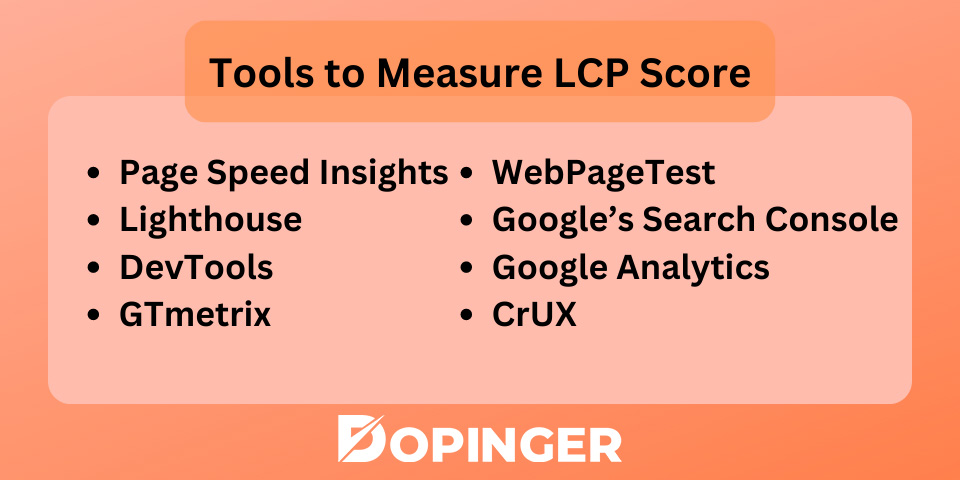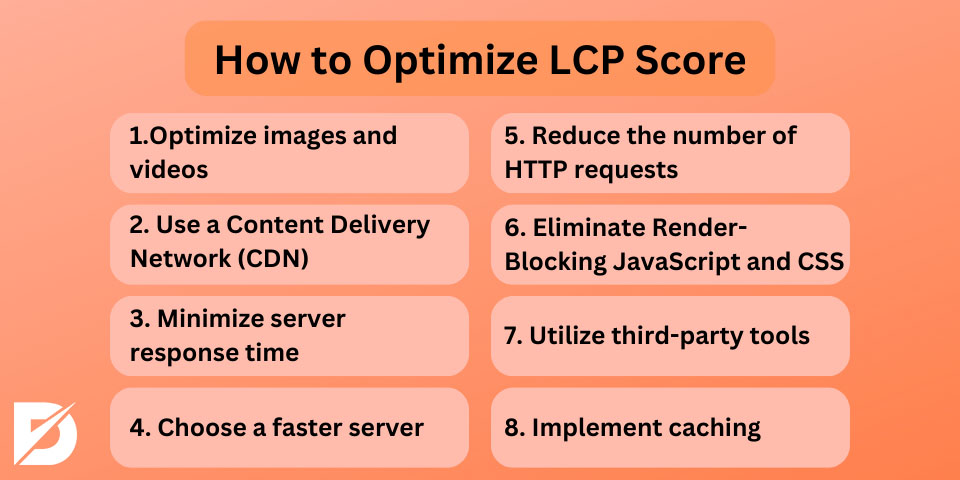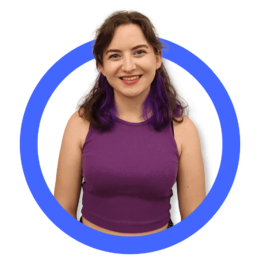Evaluating website loading speed is crucial, and one of the key metrics used by Google is the Largest Contentful Paint. Google has prioritized this metric for creating a positive user experience on the web. In today’s guide, we’ll delve into its details. First, we’ll provide an introduction to LCP and its meaning. Second, we’ll emphasize its significance and explain why it is essential for optimizing web pages. Third, we’ll provide well-known tools to measure your Largest Contentful Paint score. Fourth, we’ll talk about the ideal score you should have. After we cover all these topics, we’ll list essential steps to measure this score. Well, we’ve talked enough; let’s get started!
What Is LCP?
The main question is, “What is LCP?“ The largest Contentful Paint gauges the time it takes for the largest element of a web page to appear on the screen fully. In other words, it measures how long it takes for the largest visual element on a web page to display to your visitors. The element can be any visible content, such as an image, a video, a background image, or a heading. The defining characteristic of the elements measured for LCP is that they are usually the most prominent element in the visitors’ viewpoint. It means they are the elements that catch the visitors’ attention and draw their focus.
Why Is the Largest Contentful Paint Important?
Largest Contentful Paint is a critical metric for your website performance as it measures the time it takes for the most prominent element on a page to load. This element plays an important role in your website performance, which is generally the primary reason users visit it. If the largest element on a webpage takes a long time to load, visitors may need help accessing the content they want to view. This delay can lead to frustration and impatience, particularly if users wait for the most significant element to load before interacting with the page’s content. Slow LCP can significantly impact visitor experience, as users may become discouraged from waiting for the webpage, resulting in decreased engagement. In this situation, your website’s bounce rate will increase. You should know how to avoid LCP and how to reduce bounce rate.
If the Largest Contentful Paint of a web page takes a long time to load, it negatively affects the visitor experience. Since visitors need to wait until the largest element of the page is fully rendered before they start interacting with it, slow loading times can make users impatient and dissatisfied and leave the page before it fully loads.
How to Measure LCP Score
Different tools are available on the web to measure the LCP score of your web page. At this point, we can divide these tools into two main categories: Lab data and Field data tools. Here, you may wonder about the difference between these two. Let’s explain briefly.

Lab data tools offer a controlled testing environment, while field data tools measure real-world experiences. Using both provides a complete view of LCP performance. The most commonly used Lab Data tools are Google’s Page Speed Insights, Lighthouse, Chrome’s DevTools, GTmetrix, and WebPageTest. These tools offer a comprehensive performance report, including your Largest Contentful Paint score. Conversely, Google’s Search Console, Google Analytics, or CrUX (Chrome User Experience Report) provides a real-time view of page loading and LCP score.
Thanks to their varying advantages, a combination of Lab and Field tools is best for accurate Largest Contentful Paint analysis.
What Is the Ideal LCP Score?
Once we’ve understood the importance of the Largest Contentful Paint, a new question arises: “What is a good LCP score?” For a webpage, an optimal score would be 2.5 seconds or faster. It is considered average if the score is between 2.5 to 4 seconds. However, if the score exceeds 4 seconds, it indicates a poor score that requires further improvement. It is one of the most important Core Web Vitals elements.
It is important to keep in mind that the ideal LCP score can differ based on your website’s requirements and goals.
How to Optimize LCP Score
It’s time to answer, “What steps can I take to improve my LCP score and create an effective SEO strategy?” Don’t worry; we’ll help you. Before listing the key steps, there is an important point you should consider. Optimizing the LCP score is achievable with consistent effort. While monitoring your score is essential, taking actionable steps to improve it can yield significant results. To achieve this, you should integrate a range of analyses into your daily routine. Now, look at some of the primary tasks you should achieve to enhance your Largest Contentful Paint score.

- Optimize images and videos: Remember that images and videos significantly contribute to your website’s LCP score. Therefore, you should reduce the image size by resizing or compressing them.
- Use a Content Delivery Network (CDN): A CDN service boosts the loading speed of images and videos on your website. All you need to do is to choose a reliable CDN provider and integrate it with your website.
- Minimize server response time: Minimizing server response time can improve the LCP score by allowing faster delivery of critical resources to the user.
- Choose a faster server: Choosing a reliable hosting service allows you to improve your page loading time. Look for one that can handle your website’s size and traffic volume.
- Reduce the number of HTTP requests: You can minimize HTTP requests as this decreases the time needed to download necessary resources for page rendering. To achieve this, you can combine files or reduce the use of third-party scripts.
- Eliminate Render-Blocking JavaScript and CSS: Some resources on a webpage, such as CSS and JS files, can block the rendering process and slow down page loading. These render-blocking resources may lead to slow website performance by delaying the loading of certain elements.
- Utilize third-party tools: LCP can be improved using image transformation services like Contentful Image API. This service allows for automatic image optimization (different sizes, formats, and resolutions) and responsive image delivery based on device and network conditions.
- Implement caching: Caching temporarily preserves a webpage’s static assets, reducing the data transferred during initial loading and speeding up page load time.
You can use our Technical SEO Checklist to not miss any technical SEO step.
Largest Contentful Paint vs. Page Loading Time
After you’ve understood LCP, the next and final question is, “Is there any difference between Largest Contentful Paint and page loading time?” It sounds like the two are the same thing, right? But this is not true. There are both very small and very big differences between these two terms. Here are five major differences you can check.
- Largest Contentful Paint specifically measures the time it takes for the largest element on a web page to load. However, page loading time is a much broader term. It refers to the time it takes to load all the resources on a page.
- LCP is an essential metric for a better user experience, as it indicates the time visitors need to wait for the largest element to load. On the other hand, page loading time impacts the overall visitor experience and can influence the bounce rate of your webpage.
- When determining the Largest Contentful Paint score, the loading time of the biggest element is considered. In contrast, page loading time considers the duration taken to load all your website elements.
- Although LCP is crucial in determining user experience, other metrics also influence it. On the other hand, page loading time is an essential factor determining the overall user experience and can significantly impact the bounce rate if not optimized.
- To optimize the Largest Contentful Paint score, you should improve the loading time of the biggest element on the page. In contrast, page loading time can be improved by examining and optimizing all the elements within the web page.
Our Final Thoughts on Largest Contentful Paint
Google analyzes various metrics when ranking web pages to present optimal outcomes to its users, emphasizing relevance and quality. The largest Contentful Paint is one of the fundamental web performance metrics. As we mentioned above, it is time until the largest element of a web page is fully loaded and rendered. The top reason for having a good score is to create a positive visitor experience and improve user engagement. The ideal score for your LCP is less than or equal to 2.5 seconds. However, if you have trouble here, don’t worry. There are some basic methods to enhance your score. You can optimize your images and videos by resizing or compressing, using a CDN, or selecting a faster server. Remember, everything is for users who deserve a faster website!
Frequently Asked Questions About
You should regularly track the LCP score to ensure the web page’s loading time remains under 2.5 seconds.
Several factors may cause a poor LCP score. Large images or videos that take too long to load and render are one of the most common causes. Besides, slow server response, too many HTTP requests, or connection issues are also the main causes.
Our answer is an absolute YES! Google uses Largest Contentful Paint to evaluate the loading performance of any web page. Faster page speed is essential for SEO, as optimizing LCP lets you improve search engine rankings and deliver a positive user experience.
You can use several online tools, such as Google’s PageSpeed Insight, Lighthouse, or WebPageTest. These tools also help you determine the areas for improvement.
Although the two terms are metrics used to measure the loading performance of any web page, they differ in what they measure. LCP measures the time it takes for the largest element on a page to load and render. On the other hand, FCP is a metric that calculates the time required for the first element on a page to display.





No comments to show.